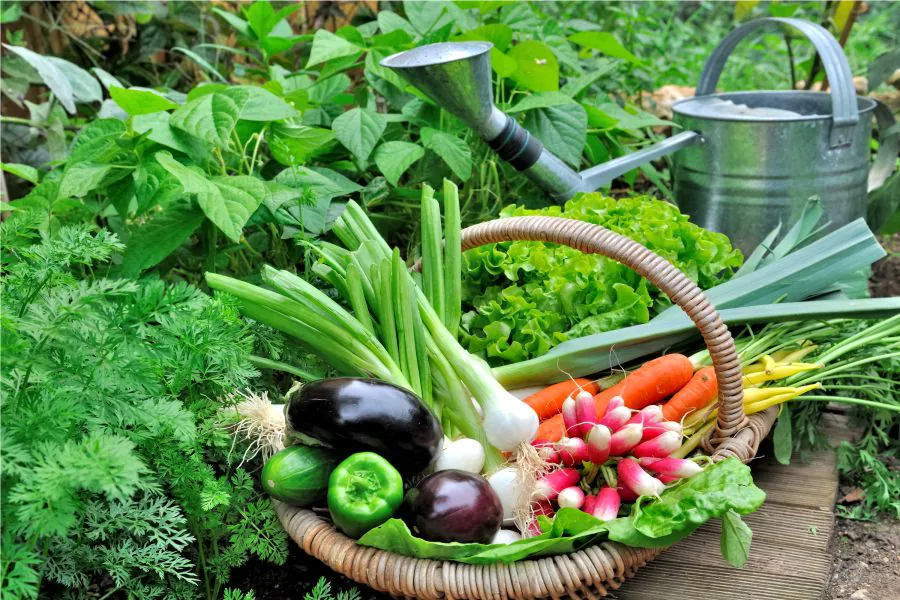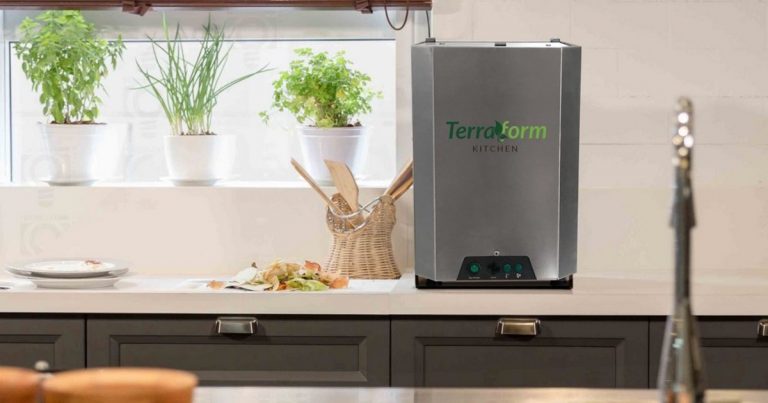Growing a vegetable garden at home is an excellent way to ensure fresh, healthy and tasty food. Furthermore, it is a sustainable activity that can help reduce your carbon footprint. But where to start?
In this guide, we'll show you how to start your garden, what equipment you need, and how you can optimize plant care with sprinklers and other tools. Let's go?

Why Create a Vegetable Garden?
Creating a vegetable garden offers numerous benefits. You can grow your own vegetables and herbs, ensuring fresh, pesticide-free food.
Furthermore, tending a vegetable garden can be a relaxing and educational activity, perfect for the whole family. Having a vegetable garden is also an excellent way to contribute to sustainability, reducing food waste and the need to transport long distances.
Choosing the Ideal Location
To start your vegetable garden, it is essential to choose the right location. Here are some tips for selecting the best space:
- Sun light: Look for a location that receives at least 6 hours of sunlight per day. Sunlight is crucial for healthy plant growth.
- Ground: The soil must be fertile and well drained. Avoid areas with lots of rocks or roots.
- Access to Water: Make sure the location has easy access to a water source to facilitate irrigation.
If you don't have a garden, don't worry. You can create a vegetable garden in pots or planters on a balcony or even indoors, as long as the location receives enough sunlight.
Preparing the Soil
Preparing the soil correctly is essential to the success of your vegetable garden. Before planting, follow these steps:
- Cleaning: Remove rocks, roots and weeds from the soil.
- Aeration: Use a shovel or rake to loosen the soil, allowing air and water to penetrate better.
- Composting: Add compost or organic fertilizers to enrich the soil with essential nutrients.
Necessary equipments
To take good care of your garden, you will need some basic equipment. Here are some essentials:
- Gardening Tools: Shovel, rake, pruning shears and a gardening fork are essential.
- Gardening Gloves: They protect your hands while you work on the ground.
- Irrigators: Keeping the garden well-irrigated is crucial for plant growth. Automatic sprinklers can make this task easier.
- Composting: A composting system helps to recycle organic waste, transforming it into natural fertilizer.
Sustainable Village offers a wide range of high-quality gardening equipment and irrigation systems, ideal for beginners and experienced gardeners alike.
Planting and Caring
After preparing the soil and gathering your equipment, it's time to plant. Follow these tips to ensure your plants grow strong and healthy:
- Plant Selection: Choose vegetables and herbs that adapt well to your region's climate. Lettuce, tomatoes, basil and chives are great options for beginners.
- Planting: Follow the specific planting instructions for each type of plant, respecting the depth and distance between the seeds.
- Irrigation: Keep the soil moist, but avoid waterlogging. Use automatic sprinklers to ensure uniform watering.
- Maintenance: Keep an eye out for pests and diseases by removing damaged plants and using natural control methods.
Harvesting and Using Food
The best part of having a garden is harvesting and consuming the food you grew. Here are some tips for harvesting:
- Timing: Harvest vegetables and herbs at the right time, when they are ripe but before they start to deteriorate.
- Tools: Use clean scissors or knives to cut the vegetables, avoiding damage to the plants.
- Storage: Store food correctly to maintain freshness. Some herbs can be frozen or dried for future use.
Sustainable Village: Your Partner in the Garden
Sustainable Village is a company specializing in sustainable solutions for vegetable gardens. They offer a variety of products, from gardening tools to efficient irrigation systems. With Sustainable Village products, you can ensure that your garden is productive and ecological.
FAQ
1. Do I need a lot of space to create? No, you can create a vegetable garden in small spaces, such as balconies or even in pots indoors.
2. What are the best vegetables for beginners? Lettuce, tomato, basil and chives are great options for those just starting out.
3. How do you know if the soil is good for planting? The soil must be fertile, well drained and free of stones or weeds. Adding compost can improve soil quality.
4. How often should I water my vegetable garden? The frequency depends on the type of plant and the climate, but it is generally necessary to water 2 to 3 times a week.
5. Where can I buy quality equipment for my garden? Sustainable Village offers a wide range of gardening and vegetable garden products, available to purchase online.
Benefits
Creating a vegetable garden brings several benefits, such as:
- Fresh Food: Have access to fresh, pesticide-free vegetables and herbs.
- Economy: Reduce food costs by growing your own.
- Sustainability: Contribute to sustainability by reducing food waste and the need for long-distance transportation.
- Education: Learn about botany, ecology and sustainability in a practical way.
Tutorial on How to Use Sustainable Village Equipment
- Choose the Right Equipment: Visit the Sustainable Village website and select the products you need, such as gardening tools, composting and irrigation systems.
- Prepare the Soil: Use Sustainable Village's composts and fertilizers to enrich the soil.
- Plant your Seeds: Follow planting instructions and use the proper tools to ensure your plants get off to a good start.
- Irrigate Correctly: Use Sustainable Village's irrigation systems to keep your plants well hydrated.
- Harvest with Care: Use specific scissors and tools to harvest your vegetables and herbs without damaging the plants.
Creating a vegetable garden is a fantastic way to connect with nature and enjoy fresh, healthy food. With Sustainable Village products, you will have everything you need to start and maintain a successful garden. Research the plants suitable for your region and season, and have fun growing your own food!
Countries where it can be used
Sustainable Village products are ideal for vegetable gardens in many countries, including the United States, Canada, Brazil, Australia, the United Kingdom, Germany and many others. No matter where you are, you can create a thriving vegetable garden with the sustainable solutions offered by the company.
Sustainable Village’s differences
Sustainable Village stands out for its high quality products, focused on sustainability and efficiency. With a wide range of gardening tools and systems, they make growing vegetable gardens easy, regardless of the size of the space or the gardener's experience level.
Caring for the Vegetable Garden
Taking good care of the garden is essential for the plants to grow strong and productive. This includes watering the plants properly, fertilizing the soil and protecting the garden against pests. Irrigation is one of the most important precautions, and using efficient systems, such as those offered by Sustainable Village, can help keep the soil just right.
Regular fertilization is also necessary to replenish soil nutrients that are consumed by plants. Home composting is an excellent way to enrich the soil in a sustainable way. Also, keep an eye out for signs of pests or diseases, and treat them quickly to prevent them from spreading.
Creating a vegetable garden at home is an enriching activity that brings many benefits, from producing fresh food to promoting a more sustainable lifestyle. With the right equipment and a little dedication, you can transform any space into a productive garden.
Sustainable Village offers high-quality products that make growing and maintaining your garden easier. Their fabric pots for living soil, raised beds with trellises, and Blumat irrigation systems are examples of items that can help ensure the success of your gardening project.
Start planning your garden today, choose the plants you like most and use Sustainable Village's sustainable solutions to create a healthy and productive green space. Happy gardening!
Check out other interesting facts about recycling clicking here.
Learn how to make art by recycling, Click here.



